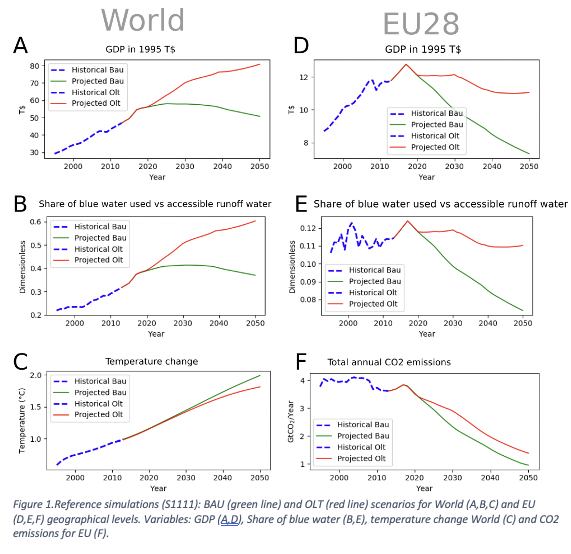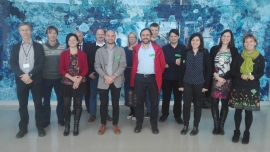In this article we review the different approaches for modelling the energy transition to a decarbonized economy and introduce a new open source model: pymedeas.
We identify a number of limitations in current models, such as the lack of consideration of out-of-balance situations (such as an energy transition) and nonlinear feedbacks between key variables. Moreover, biophysical limitations are not considered in many cases (such as SSP scenarios). To address these issues, the pymedeas models (a set of nested IAMs: integrated assessment models) have been created, allowing anyone interested on it, at no cost in software licenses (it is programmed in Pyhon, an open source language), explore, design and plan appropriate strategies and policies to decarbonise the energy sector globally, in the EU and at the state level (Austria).
The main novelty of the new open source model is that it addresses the energy transition taking into account biophysical limits, the availability of raw materials and the impacts of climate change. This paper shows the capabilities of the model through various simulation experiments to explore alternative routes for the renewable transition. To simplify the analysis, we focused on two basic scenarios (both based on the IPCC SSP2 scenario): BAU and OLT (Optimal Level Transition).

In both scenarios, the role played by the demand for extreme growth and the impact on the economy in the medium term can be seen. The difference between the two scenarios is the renewable implementation rate, which, in the case of the OLT is higher than in the BAU (which extrapolates current trends). In both scenarios, four options (hypotheses) are activated and deactivated: Efficiency, EROI, Climate Change and Scarcity. To see how they act in isolation or together, we turned them on/off one at a time or together. In the selected scenarios of this work, it is found that the future scarcity of fossil fuels is the most influential factor in the evolution of the system. Efficiency changes and damage from climate change are also important determinants influencing model results. This work is the result of a workshop held in November 2018 in which the whole consortium participated on the tests of the pymedeas model, which have now been published in this article.
With this work, an open source and transparent tool is made available to society. Everyone can use it on their computer for designing or analysing future energy and sustainability policies.
Medeas partner ICM-CSIC-All Partners
Person(s) involved
J. Solé, R. Samsó, E. García-Ladona, A. García-Olivares, J. Ballabrera-Poy, T. Madurell, A. Turiel, O. Osychenko, D. Álvarez, U. Bardi, M. Baumann, K. Buchmann, Í. Capellán-Pérez, M. Černý, Ó. Carpintero, I. De Blas, C. De Castro, J.-D. De Lathouwer, C. Duce, L. Eggler, J.M. Enríquez, S. Falsini, K. Feng, N. Ferreras, F. Frechoso, K. Hubacek, A. Jones, R. Kaclíková, C. Kerschner, C. Kimmich, L.F. Lobejón, P.L. Lomas, G. Martelloni, M. Mediavilla, L.J. Miguel, D. Natalini, J. Nieto, A. Nikolaev, G. Parrado, S. Papagianni, I. Perissi, C. Ploiner, L. Radulov, P. Rodrigo, L. Sun, M. Theofilidi

